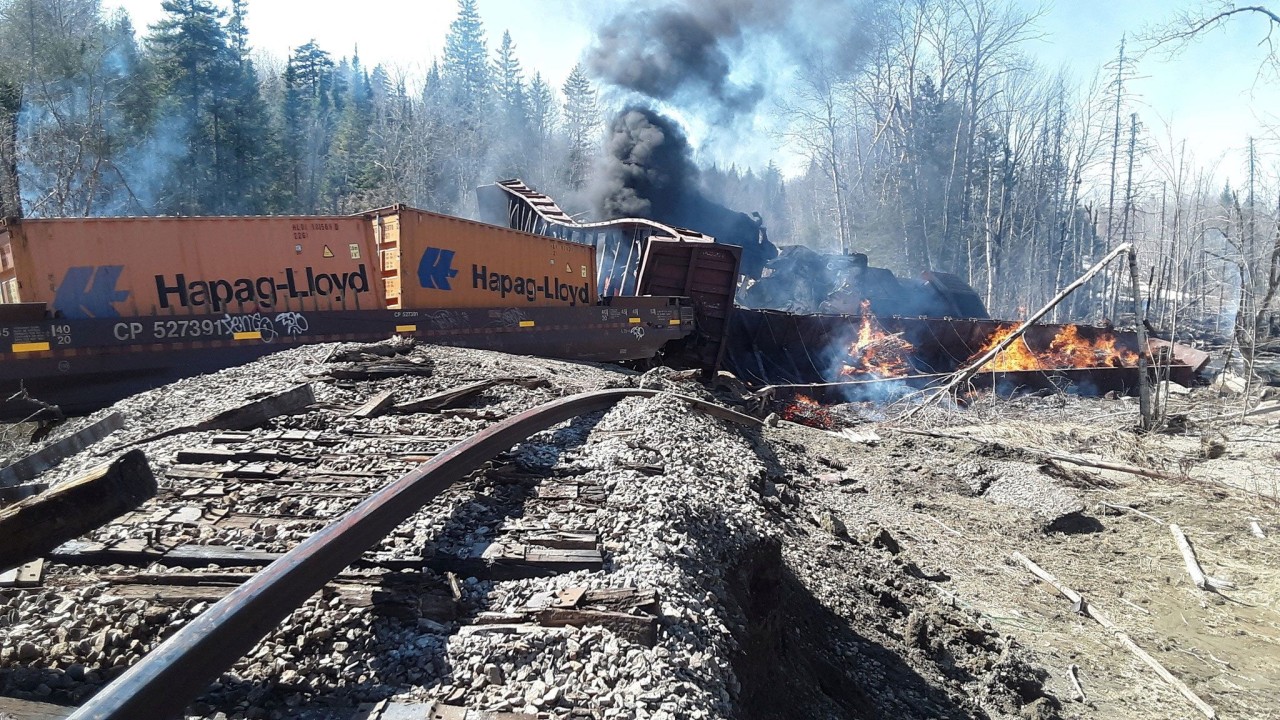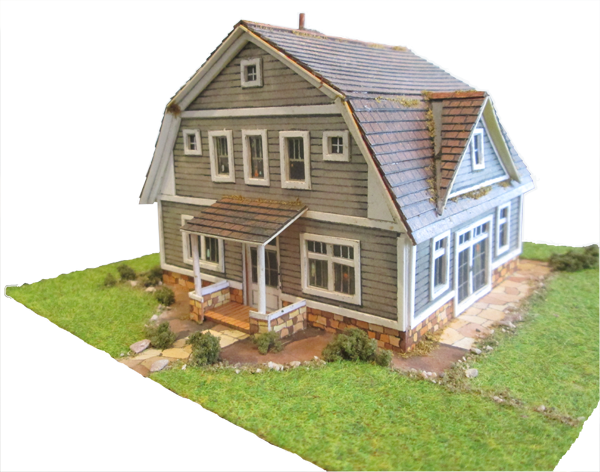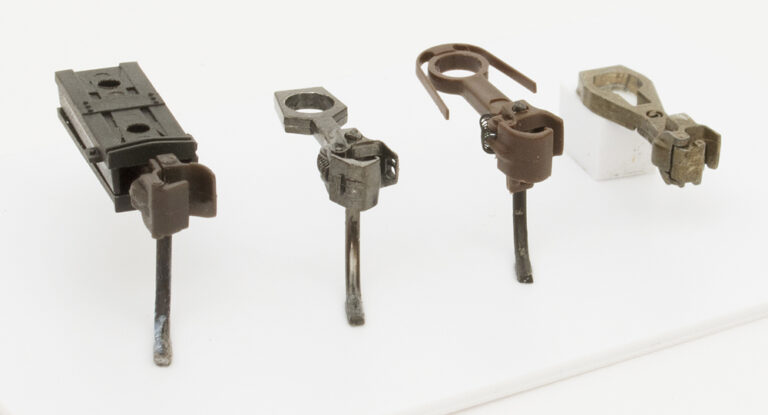Top 5 Biggest Mistakes Railroaders Make
Mistakes # 1 – Too Much Eagerness & Too Little Patience
You’ve probably seen the amazingly complex and well-detailed
model train layouts in the magazines, or at a model train show
and thought… I want to build one of those!
There is nothing more fulfilling than owning and operating a
layout where the trains don’t derail, multiple trains can run at
once with sound and smoke effects, and the layout is interesting
and realistic.
But… there is something you need to know!
Those amazingly complex and realistic looking model train layouts
took a very long time to build with a huge amount of patience
thrown in too!
Those intricate layouts did not happen overnight. Some of them
may have taken hundreds of hours, but they were a labor of love!
So the amount of hours it took to build the layout ultimately does not matter
Things to remember:
- Most times the owner had to have 3 or 4 attempts at getting
the scenery and structures looking exactly as they wanted. - Most model train layouts are never finished. They become
never ending “works in progress”. - That is because this hobby is about the adventure along the
way.
Each small part of your layout will provide many memories for
years to come. You will look at the tunnel you created and
remember that it took you 3 attempts to shape the landscape
and 9 coats of paint to perfect the look… but in the end it was all
worth it.
This is the adventure the experienced model railroaders talk
about. It is where the most enjoyment and fulfillment comes
from… Tame that eagerness and find some patience!
Mistake # 2 – Trying To Grow A Model Train Starter Set Into Your Dream
Layout
Model train starter sets can range from $60 to $300 and
upwards. They come with varying components from the very
basic oval track to tracks with elevation and landscaping
included. But, like most things, you get what you pay for.
These starter kits are designed to provide an introduction to the
hobby. Some of the lower end starter kits have just enough
power to send the train around the oval track it came with, and
not much more!
Most beginners get bored very quickly with a train going around
an oval track. So, they purchase new sections of track, and
possibly a turnout or two, just to expand from the boring oval.
That seems a great idea until the locomotive keeps slowing
down and sometimes stopping when it is at the other end of
the track. This can be very frustrating… You’ve just paid for this
extra track and now the train won’t run properly.
Breakdown of the three biggest problems
- The problem is that the transformer was designed to
provide enough power for the oval track. It doesn’t have the
grunt to push the power all the way around the length of
the new track when the locomotive demands it. So to solve
this problem a higher rated transformer is required… - Then there is the locomotive in the starter set. A good
locomotive is one that has many pick-up wheels and is fairly
heavy.
The pick-up wheels take the power from the track and
provide it to the motor. Better quality locomotives have
many pick-up wheels while starter set locomotives tend to
only have one set. - Tracks get dirty (something we’ll talk about later) which can
provide a less than perfect conductor for the power from
the track to the motor. A heavier locomotive will also
provide even better contact.
The lesson here is… Do your research!
In 9 cases out of 10, trying to grow a starter set into your dream
layout usually ends up becoming an unwieldy mess of a layout.
With some initial research and planning, you will completely
avoid this problem.
Avoid these mistakes. Take a look at these awesome resources
Mistake # 3 – Confusing Scale And Gauge

A common mistake for model train beginners is to confuse
scale and gauge. Let me explain…
Scale is the proportion of the replica to the real thing or
‘prototype’.
For example, HO (pronounced “aitch-oh”) scale locomotives
are 1/87 the size of the real-life locomotive, or an HO scale
locomotive is 87 times smaller than the real locomotive.
Model train gauge is the width between the inside running
edge of the track.
Hopefully, that explanation will demystify the scale and
gauge differences and you won’t make that mistake again…
Mistake # 4 – Steep Gradients and Tight Curves
Another common beginner mistake is creating gradients that are
too steep and curves that are too tight.
Imagine… You have taken hours to painstakingly create the
curves and gradient in your layout. The track has been pinned
down, the ballast laid, the landscape created around the feature
and it is looking superb.
Now for the first test run. So you load up your locomotive with a
few passenger carriages and off it goes. It comes to the lovely
curve you have created and the 2nd passenger carriage derails.
Oops! Maybe the locomotive was going too fast for the corner,
so you try again and guess what? The passenger carriage derails
again. Okay, so you try it with freight carriages… with no
problem, they run through the curve.
What is the problem?
- The curve is too tight for the longer passenger coaches
- But what about the gradient you have created to allow your
train to climb up to the 2nd level? Well, the train gets about
2/3rds of the way up and then it slows and stops… - The gradient is too steep for the train.
- The trick is to always work to scale (even on curves and
- gradients) and test run your fully loaded trains before
- pinning down the track and completing the landscape…
Avoid these mistakes. Take a look at these awesome resources
Mistake # 5 – Going Too Big Too Quickly
Probably the biggest mistake model train beginners make is going too
big too quickly… This tends to put too much stress on your budget
and the time you have available.

The layout can tend to look like it is not getting close to being
finished and you may lose interest!
The trick is to start with a small layout, like a shelf mounted
layout or a 4 x 8 foot layout. It is fairly simple to build a 4 x 8 foot
bench and won’t break the bank or your time reserves.
It is relatively inexpensive to buy everything you need and will
give you a great size layout to get you started. Most of the huge
basement mega layouts started from a simple 4 x 8 foot layout
and grew over the years. Another 4 x 8 foot extension is added
and then another and another.

Avoid these mistakes. Take a look at these awesome resources






